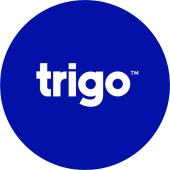Retrofitting Big Retail to Deliver Frictionless Shopping Experiences
The grocery store is entering a period of accelerated change. An industry steeped in tradition, fueled by habitual shopping behaviors, and catering to a diverse customer base, it has become intensely competitive, with players fighting in both the physical and digital arenas. Shopper behaviors and expectations are also changing more rapidly than ever, influenced to a large degree by eCommerce standards that are leaking into the “real world.” But whether on or offline, the objective is one: to deliver a truly frictionless shopping experience.
Download now: How Trigo Brought Frictionless Checkout to Market
Intense competition, a fluctuating economy making margin optimization a must, and operational pains including employee shortages and supply chain challenges, have set traditional retail in a race to adopt new technologies. But digitization, or the transformation to a smart store, is far from simple. Challenges include the unpredictability of shopper interactions and the adoption of new technology, dynamic store operations, and physical infrastructure needs. So what is the best way to digitize a store with seamless shopping tech to keep loyal customers coming back, as well as to attract new ones?
New build vs retrofit, and what’s size got to do with it
Amazon’s approach to brick-and-mortar smart stores is to build new stores from scratch. The upsides to this approach are that the store can be completely customized to the frictionless checkout experience. Technologically, it is a smoother process because the store is designed and built to support the tech, rather than the other way around. This type of store is also better positioned to attract the type of shoppers who seek innovative experiences.
For traditional retailers looking to venture into frictionless store tech for the first time, the ‘new build’ approach is extremely costly. The major investment they will need to allocate for real estate, design and development, and customer education and support, to name just a few factors, will have a direct effect on rollout pace and scalability. Even Amazon has learned this lesson the hard way. When the tech giant introduced its first autonomous Amazon Go stores in 2018, it boasted plans to open 3,000 stores by 2021. In reality, by 2021, Amazon opened less than 50.
In other words, retailers committed to new builds will likely open fewer stores more slowly and have fewer resources allocated toward adoption support. This will then make it harder to effectively assess the autonomous store’s value for the retailer, as it might not accurately reflect the true potential of the technology.
With that in mind, most retailers exploring ways to go autonomous will look to retrofit existing stores to support the technology. The infrastructure investment and operational efforts involved in retrofitting are far from negligible, and are more complex the bigger the store and the more diverse its offerings, but with the right tech partner, it is often the path of least resistance. Depending on the technological approach, the process involves fitting an existing store with sensor systems, such as smart shelves, and/or camera systems, but the deciding factor is often the strength of the tech platform. Stores retrofitted with Trigo’s seamless shopping technology are relatively low risk for retailers – they can be transformed in days, with zero downtime to business – they have store operations and supply chain logistics already in place, and the tech can be applied at multiple supermarket tiers. Trigo chose the retrofit model because of the ease at which retailers can adopt it and how fast they can scale it.
For a more in-depth look at the different approaches to digitizing the store, and to learn more about Trigo’s approach, check out our latest whitepaper.
In this whitepaper:
- Comparing the various approaches to store digitization
- Defining a win-win deployment strategy
- How Trigo tackles some of the unique challenges of the smart store











